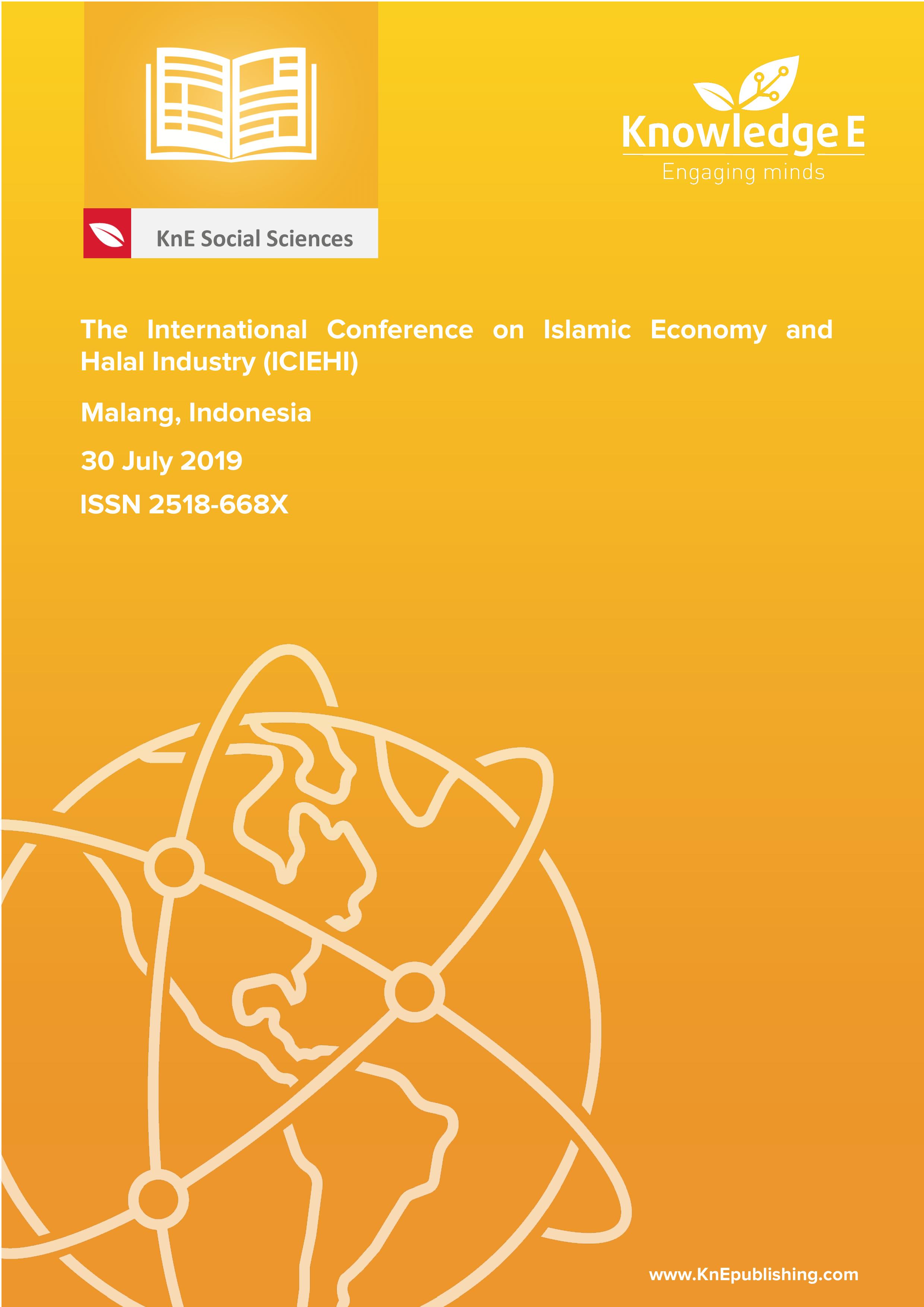Effect of Destination Image and Subjective Norm toward Intention to Visit the World Best Halal Tourism Destination of Lombok Island in Indonesia
DOI:
https://doi.org/10.18502/kss.v4i9.7318Abstract
One of the halal attractions in Indonesia is Lombok Island, which was ranked as the Best Halal Travel Destination in Indonesia according to the IMTI 2018 and was also named the best halal destination in the international arena in tourism, at the World Halal Travel Summit 2015. In fact, Lombok managed to win two titles at once, namely as the World’s Best Honeymoon Destination and the World’s Best Halal Tourism Destination. Besides being known as the island of 1000 mosques, Lombok also provides easy access to buy halal food, easy access to Shariah hotels, to make rules for visiting Shariah beaches, and religious communities. Using Lombok as a prime example, this study seeks to identify what Islamic tourists want in a tourist site. By looking at the various achievements of the Lombok Island, the researchers are willing to find out the causes of tourists visiting the Lombok Island. In particular, this study aims to determine the effect of destination image and subjective norms on the intention to visit Lombok Island. This paper is based on 100 respondents (each of whom was at least 17 years old and had never visited a halal destination in Lombok). This study uses SPSS 22. The results of the study concluded that destination image and subjective norms had a significant influence on intention to visit halal destination in Lombok Island.
Keywords: Image Destination; Subjective Norm; iIntention to Visit
References
2) Ajzen, I. (1991). The Theory of Planned Behavior. Organizational. Behavior and Human Decision Processes, vol. 50, pp. 179-211.
3) Baloglu, S. and dan Brinberg, D. (1997). Affective Images of
Tourism Destinations. Journal of Travel Research, vol. 35, pp. 11-15.
4) Cheah, I., Phau, I. and Liang, J. (2015). Factors Influencing Consumers’ Attitudes and Purchase Intention of E-deals. Marketing Intelligence & Planning, vol. 33, pp. 63-783.
5) Clow, K.E. and Baack, D. (2016). Integrated Advertising, Promotion, and Marketing Communications. United States: Pearson.
6) Echchabi, A. and Olaniyi, O.N. (2012). Using Theory of Reasoned Action to Model the Patronisation Behaviour of Islamic Banks’ Customer in Malaysia. Journal of Business Management, vol. 6, pp. 70-82.
7) Fishbein, M. and Ajzen, I. (1975). Belief, Attitude, Intention, and Behavior: An Introduction to Theory and Research, reading. MA: Addison-Wesley.
8) Hanif, A., Kusumawati, A. and Mawardi. (2016). Pengaruh Citra Destinasi Terhadap Kepuasan Wisatawan Serta Dampaknya Terhadap Loyalitas Wisatawan (Studi Pada Wisatawan Nusantara Yang Berkunjung Ke Kota Batu). Jurnal Administrasi Bisnis (JAB), vol. 38.
9) Jalilvand, M.R. (2012). Examining the Structural Relationship of Electronic Word of Mouth, Destination Image, Tourist Attitude Toward Destination and Travel Intention: An Integrated Approach. Journal of Destination Marketing and Management, pp. 134-43.
10) Kocyigit, M. (2016). The Role of Religious Tourism in Creating Destination Image: the case of Konya Museum. Journal of Religious Tourism and Pilgrimage, vol. 4, pp. 21-30.
11) Koththagoda, K.C. and Herath, H.M.R.P. (2018). Factors Influencing Online Purchasing Intention: The Mediation Role of Consumer Attitude. Journal of Marketing and Consumer Reseacrh, vol. 42, pp. 66-74.
12) Kotler, P. and Amstrong, G. (2010). Principle of Marketing. New Jersey: Prentice Hall.
13) Kotler, P. and Keller, K. L. (2016). Marketing Management (15th ed.). United States: Pearson.
14) LeBlanc, G. and Nguyen, N. (1999). Listening to the Customer’s Voice : Examining Perceived Service Value among Business College Students. The International Journal Of Educational Management.
15) Lin, C., Morais, D. B., Kerstetter, D. L. and Hou, J. (2007). Examining The Role Of Cognitive And Affective Image In Predicting Choice Across Natural, Developed, And Themepark Destinations. Journal of Travel Research, vol. 46, pp. 183–194.
16) Liu, Y., et al. (2018). What Makes Muslim Friendly Tourism? An Empirical Study on Destination Image, Tourist Attitude and Travel Intention. Advances in Management & Applied Economics, vol. 8, pp. 27-43.
17) Lopes, S.D.F. (2011). Destination Image: Origins, Developments And Implications. Vol. 9, pp. 305-315.
18) Madyan, M., et al. (2015). Dampak Ekonomi Wisata Religi, Studi Kasus Kawasan Wisata Sunan Ampel Surabaya. Jurnal BISMA (Bisnis dan Manajemen), vol. 7, pp. 101-106.
19) Mirabi, V., Akbariyeh H. and Tahmasebirafard, H. (2015). A Study of Factors Affecting on Customers Purchase Intention‖. Journal of Multidisciplinary Engineering Science and Technology, vol. 2, pp. 267-273.
20) Pavlou, P.A. and Chai, L. (2002). What Drives Electronic Commerce Across Cultures? A Cross-Cultural Empirical Investigation Of The Theory Of Planned Behavior. Journal of Electronic Commerce Research, vol. 4¬¬, pp. 240–253.
21) Peter, J. P. and Olson, J.C. (2010). Consumer Behavior and Marketing Strategy (5th ed.). Homewood, IL: Irwin.
22) Phau, I., Shanka, T. and Dhayan, N. (2010). Destination Image And Choice Intention Of University Student Travellers To Mauritius. International Journal of Contemporary Hospitality Management, vol. 22, pp. 758–764.
23) Schiffman, L. and Wisenbilt, L. (2015). Consumer Behaviour. Edisi Sebelas. Pearson Education.
24) Sudarsono. (1993). Kamus Filsafat dan Psikologi. Jakarta: Rineka Cipta.
25) Younus, S., Rasheed, F. and Zia, A. (2015). Identifying the Factors Affecting Customer Purchase Intention‖. Global Journals Inc (USA), vol. 15.
26) Zikmund, G. W. and Babin, B.J. (2013). Menjelajahi Riset Pemasaran (10th ed.) Jakarta: Penerbit Salemba Empat.
27) Frauenfelder, M. (2005). The Sociology of Interfaces. Retrieved from http://www.thefeaturearchives.com/topic/Handsets/The_Sociology_o
f_Interfaces.htmlS.
28) Katadata Z. (2018, May) Retrieved June 3, 2019 from https://katadata.co.id/grafik/2018/05/23/generasi-z-indonesia-anggap-agama-paling-penting/.
29) Tren (2017)Retrieved June 3, 2019 from https://kubik.phinemo.com/travel-online-trend-indonesia-2017/.
30) Kompas (2017, May). Retrived June 3, 2019 from https://travel.kompas.com/read/2017/05/03/140700727/indonesia.peringkat.ketiga.destinasi.halal.dunia/.
31) CBC Indonesia (2018, April). Retrieved June 3, 2019 from https://www.cnbcindonesia.com/syariah/20180412114337-29-10722/lombok-destinasi-wisata-halal-terfavorit-di-dunia
32) Wartaekonomi GMTI (2018): Indonesia Destinasi Wisata Halal Favorit. Retrieved June 3, 2019 from https://www.wartaekonomi.co.id/read177252/survei-gmti-2018-indonesia-destinasi-wisata-halal-favorit.html.
33) Setkab, Retrieved June 3, 2019 from https://setkab.go.id/kedepankan-keramahan-islami-lombok-raih-gelar-destinasi-halal-terbaik-dunia/

